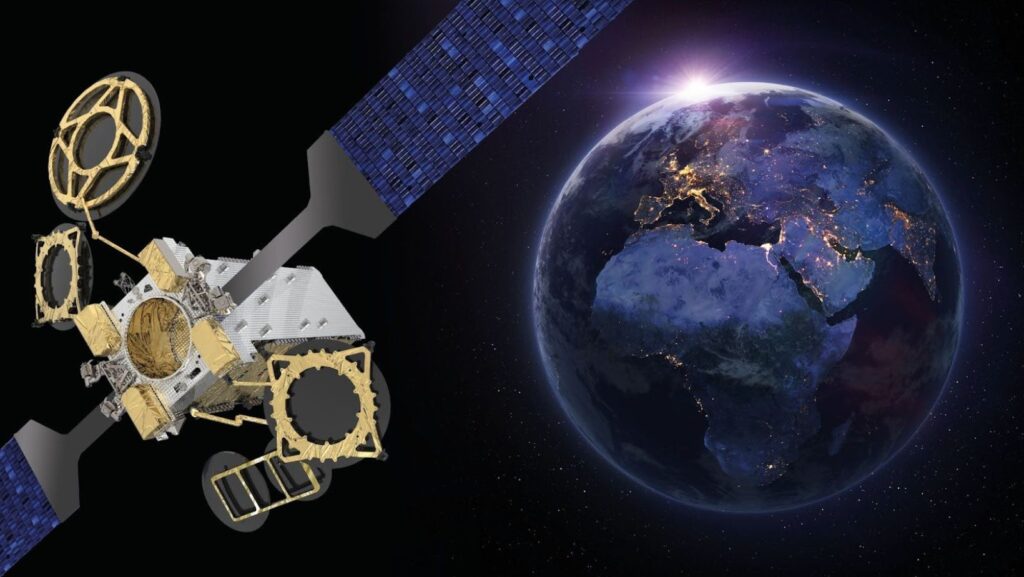We rely on satellites for so many routine tasks, from communication to itinerary planning, that a major disruption in satellite operations can cause utter chaos on Earth. Fortunately for us, the sheer chaos scenario is unlikely because satellite components are built to withstand the harsh environment of space. So, what are the problems with satellites in space? Below, we will explain the chief space hazards for man-made tech, starting with the basic facts about satellite components and their operation.
Major Satellite Components Explained
The exact satellite components list can be very long, but the basics go down to the bus, also called platform, and payload. The bus holds components a spacecraft needs to operate — power source, thermal regulations, antennae to communicate with ground stations, as well as orientation and propulsion systems. Payload is more mission-specific and can be anything, from cameras to capture images of the Earth to chemical sensors for studying the composition of other planets in our system.
Extreme cold, high radiation, and intense temperature fluctuations affect all satellite components and functions — buses with essential equipment, payloads that carry out missions, and outside coating designed to shield electronic components from space hazards. But let’s discuss everything in the right order — starting from take-off.
What Can Affect Satellites?
Before satellites and their essential components can reach their orbital destination to be bombarded with various space dangers, they must ‘survive’ the launch. This sounds obvious but take-off is often the most challenging part — not only because of a potential launch malfunction, but rather because of the massive vibration associated with every rocket launch.

Another hazard for satellite components is separation from a rocket —because when this happens, another vibration shock occurs in the entire satellite body. The right term for this phenomenon is pyrotechnic shock, a dynamic wave very similar to a huge explosion.
But assuming the launch and the separation were successful, what happens next? In space, what are the factors affecting satellite motion? Or more specifically, what influences satellite components and their operation? Let’s find out, starting with the general ones and moving on to evaluate their consequences component by component.
Recurring Problems of Satellite Components
Some recurring space hazards that gradually affect all satellite components include:
- Radiation exposure: space is a very radioactive environment. On Earth, our atmosphere shields us from solar radiation and high-energy flares from our parent star, but in space, satellite components are fully exposed to it. The exact level of radiation varies depending on satellite orbit and solar cycle (minimum vs maximum). Still, constant exposure to salt radiation gradually degrades satellite component materials.
- Thermal stress: radiation is not the only problem with not having an atmosphere as a shield. The space environment is prone to rapid temperature changes, ranging from -200°C to +200°C on the Moon and going way beyond these extremes. Eventually, thermal stress also leads to component fatigue and failure.
- Micrometeoroids and Space Debris: another recurring hazard, especially in low-earth orbit (closest to us) that can cause significant damage due to regular impacts, even if they’re small. Besides, cases of collisions with large space debris are not unheard of. And while space agencies are working on initiatives to clean up our obit, we cannot discard natural debris, like dust particles floating at high speeds.
- Vacuum: we all know that space is a vacuum, that is, it has zero pressure compared to the environment on Earth. This causes another challenge for spacecraft components (especially coated in plastics) because all materials emit gases. In a vacuum, there is no wind to blow those away, so the spacecraft is drifting in its own toxic, vapours. Some component materials are prohibited in space — not just plastics, but also tin, zinc, and cadmium. In a vacuum, they form the so-called ‘tin-whiskers’ — crystalline structures of tin that grow on spacecraft and affect component integrity.
- Electrostatic Discharge: contamination as the result of vapour outgassing often leads to electrostatic discharge. As particles accumulate, they get charged (because space is not a complete vacuum, and there are still elements to interact with). More importantly, they suddenly discharge, damaging electronic components.
Regular exposure to these external pressures affects all satellite components, especially:
- Power Systems: solar radiation degrades solar panels, reducing their efficiency, while temperature fluctuations as a satellite moves in and out of sunlight can cause mechanical stress.
- Communication Systems: Space weather phenomena, such as solar flares, can disrupt communication signals, which is something we experience first-hand on Earth. Regular collisions with debris can misalign antennas, affecting communication.
- Thermal Control Systems: even though engineers design spacecraft components to withstand high-temperature fluctuations, regular exposure to extreme temperatures eventually damages these controls. Besides, space debris impacts can puncture thermal blankets and radiators, speeding the inevitable deterioration.

Finally, high-energy solar particles can cause flips in satellite memory, corrupting data, whereas cosmic radiation often interferes with scientific sensors installed on research satellites. On the bright side, satellite components have already gone a long way, and it looks like they will keep evolving along with our space industry.
